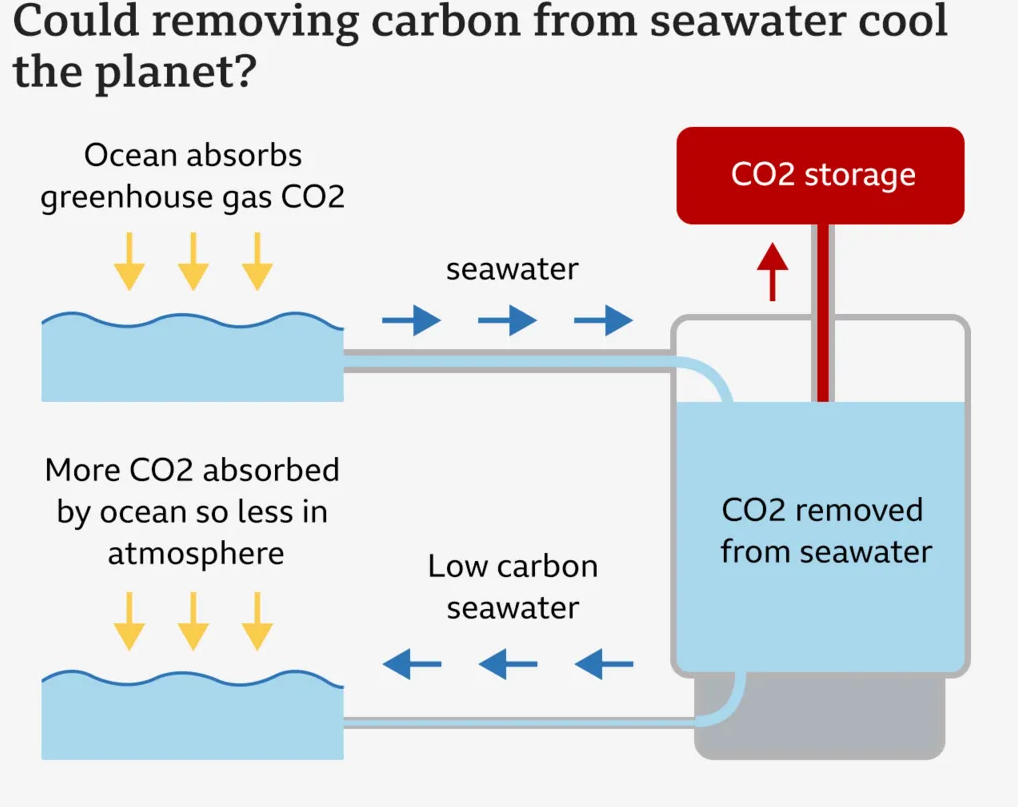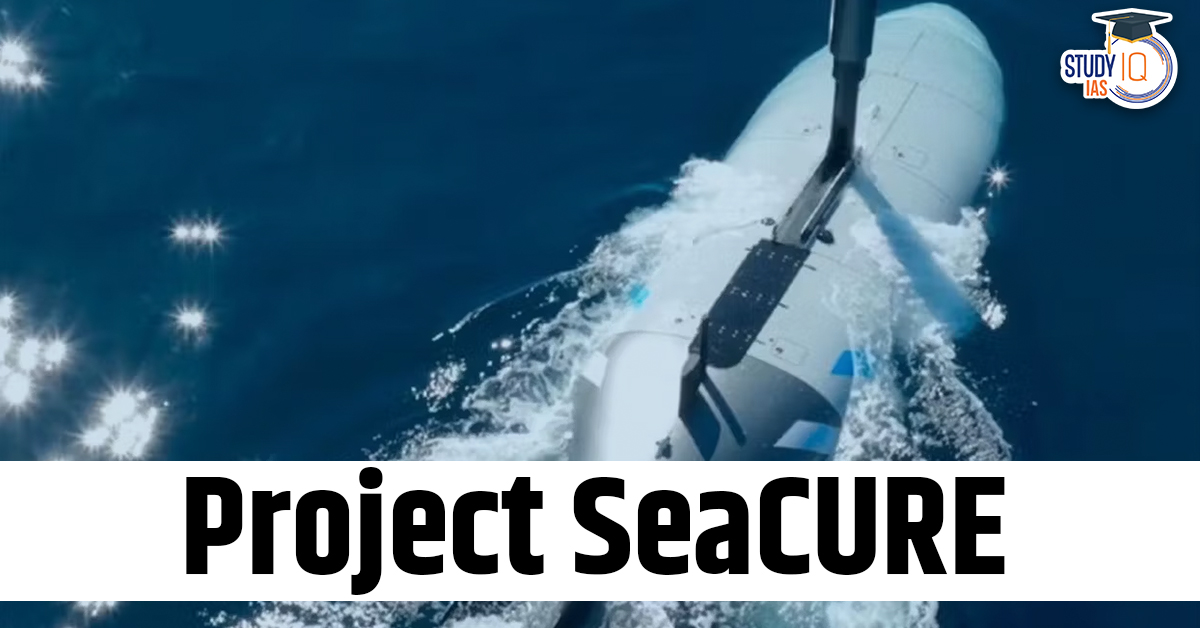Context: The UK government has recently launched a pilot project on England’s south coast to extract carbon from seawater.
About Project SeaCURE
- Project SeaCURE is a pilot project to extract carbon directly from seawater that could offer a cost-effective and scalable solution to reducing atmospheric CO₂ levels.
- Unlike conventional carbon capture techniques that focus on capturing emissions at their source or from the air, SeaCURE targets the ocean, which holds up to 150 times more carbon than the atmosphere.
How the SeaCURE Technology Works
- Seawater Intake: A pipe under the English Channel draws seawater into the facility.
- Acidification Process: Seawater is treated to become more acidic.
- This causes dissolved inorganic carbon to convert into gaseous CO₂, similar to how a fizzy drink releases gas when opened.
- CO₂ Stripping: The acidified water is passed through a large stainless-steel tank (called a “seawater stripper“) which maximises air contact.
- CO₂ is released into the air and then sucked out and captured.
- CO₂ Capture: The released CO₂ is absorbed using charred coconut husks (a natural sorbent), then concentrated and stored.

- Water Neutralization & Return: Alkali is added to neutralise the water’s acidity.
- The low-carbon water is pumped into a stream flowing into the sea.
- Once back in the ocean, this water reabsorbs more CO₂ from the atmosphere.
| Potential Environmental Impacts |
|


 List of National Parks in India 2025, Ch...
List of National Parks in India 2025, Ch...
 Bonnet Macaques: Habitat, Features, Beha...
Bonnet Macaques: Habitat, Features, Beha...
 Periyar Tiger Reserve, Map, Flora, Fauna...
Periyar Tiger Reserve, Map, Flora, Fauna...

























